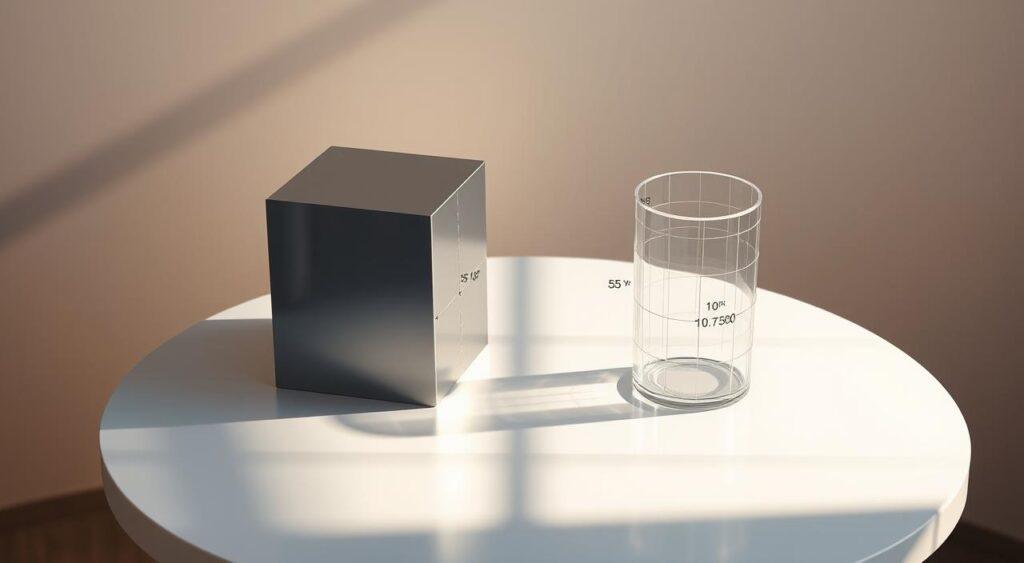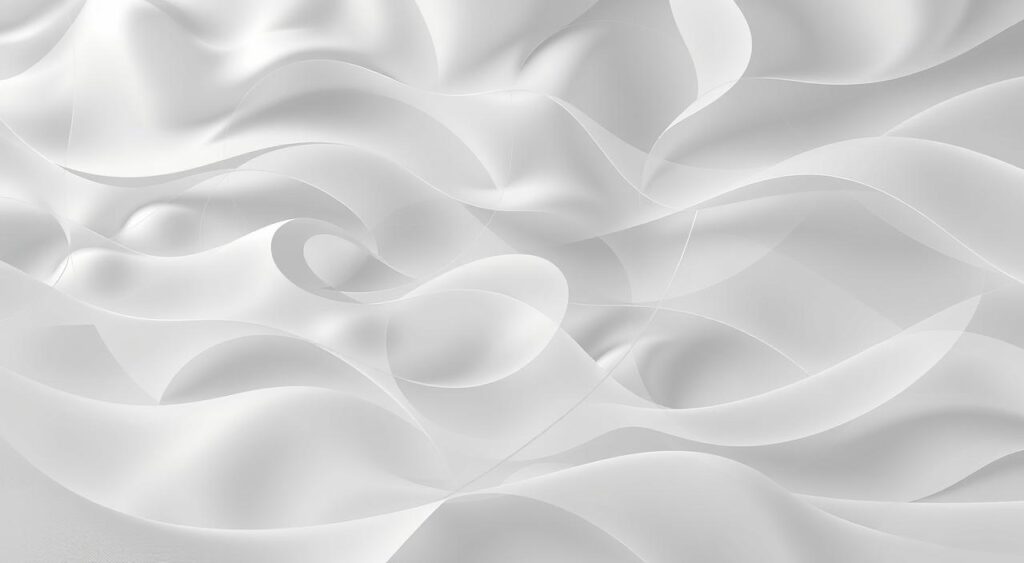Did you ever wonder how your decisions or luck depend on your “surface area”? Surface area—the total exposed area of an object—is a math concept and a mindset. 100% of people use mental models to interpret life, yet 50% of conflicts arise from these assumptions alone1.
This model helps you see which parts of your life are open to growth—and which are holding you back1.
Think of your career, learning, or choices as objects. The more surface area you manage, the more opportunities you attract. But 75% of us judge others instantly by looks or status, creating hidden limits1. By mastering this model, you’ll turn everyday choices into strategic moves1.
Key Takeaways
- Surface area links math to real-life decisions1.
- 75% of people form snap judgments based on appearance1.
- 50% of conflicts come from unchallenged assumptions1.
- Leaders who reflect on mental models build trust1.
- Expanding your “surface” opens doors to growth and innovation.
Understanding Surface Area: The Basics
Surface area is the total area of all visible sides of a 3D shape. It’s important for wrapping gifts or figuring out how much paint you need. Knowing surface area units like square feet or meters² is key to getting it right. Let’s dive into the basics.
Definition of Surface Area
Think of peeling a cube’s surfaces and laying them flat. The total area is its TSA, found using formulas like 6a² for cubes2. For a cylinder, you add the areas of the top and bottom circles (2πr²) and the curved side (2πrh), making it 2πr(r + h)2.
Always use square units, like cm² or in², to avoid confusion with volume2.
Importance in Real Life
A small cube with 10m sides has a TSA of 600m²3. That’s more than double the TSA of a 5m cube (150m²). In science, catalysts work better with more surface area2. Builders use TSA to figure out how much roofing material they need.
Try out formulas with this surface area calculator.
Common Misconceptions
Some think bigger objects have more TSA, but that’s not true. A 4cm sphere has a surface area of 200.96cm²3, but its volume is 268cm³. Surface area and volume grow differently. Another myth is that surface area units are cubic.
No, cubic units measure volume, not surface area2. Always check your formulas: a hemisphere’s TSA is 3πr², not 2πr²3.
How to Calculate Surface Area
Calculating surface area is easier than you think. We’ll cover formulas for common shapes and show how they apply in real life. Let’s start with the basics:
Formulas for Different Shapes
Each shape has its own formula. Here’s how to calculate surface area for key shapes:
- Cube: SA = 6a² (where a is edge length)4
- Sphere: SA = 4πr² (r = radius)4
- Cylinder: SA = 2πr(r + h) (h = height)4
- Frustum: Uses A = 2πrl with average radius r and slant height l5
Practical Examples
Let’s say you’re painting a room. If it’s a cube with 4-foot edges, the total area is 6 × (4)² = 96 sq ft4. That’s how much paint you’ll need! For a cylindrical tank (radius 3.5ft, height 5.5ft), the area is 197.92 sq ft4.
Visual Aids for Calculation
Having trouble with complex shapes? Use a surface area calculator tool. Online platforms like math help forums provide step-by-step guides. Visual diagrams and 3D models make complex formulas easier to understand.
Even shapes like spherical caps or frustums become clear with diagrams showing radius and height measurements4.
For more complex cases, calculus formulas can help. A frustum’s slant height l uses √[(Δr)² + h²], and integrals like ∫ 2πy√(1+[y’]²) dy handle complex rotations5. But don’t worry—the right tools make it all easier.
Applications of Surface Area in Science
Understanding the surface area formula is more than math. It helps us see how nature and technology work efficiently. This idea is used in chemistry labs and even in living cells.
It’s about making the best use of surface area, just like we make choices in life just like human decisions. Let’s see how science uses this concept.
Surface Area in Chemistry
Chemists use the surface area formula to speed up reactions. Powdered iron burns faster than big chunks because it has more surface area6. Cars’ catalytic converters work by having lots of surface area to react with exhaust.
Even something as simple as flour exploding shows the importance of surface area. Surface area of a sphere calculations help in making nanoparticles for better drug delivery.
Role in Biology
Cells use the surface area of a sphere formula to grow efficiently. Lung alveoli and intestinal villi have lots of surface area for better absorption. But cells can’t grow too big because it makes them less efficient.
A small cell has a good surface area to volume ratio, but it gets worse as the cell gets bigger7. Even tiny structures in your gut help absorb nutrients by using surface area.
Influence in Physics
Physics uses surface area to manage energy. Radiators have fins to lose heat better. Satellites are shaped like spheres to keep warm.
Spacecraft heat shields are designed using surface area of a sphere calculations to survive re-entry7. Weather patterns also depend on surface area for evaporation and cooling.
Everyday Examples of Surface Area

Surface area shapes how we interact with the world. It’s in the kitchen and your backyard. Chefs and designers use math to make tasks easier. Let’s look at where these principles are used most.
Cooking and Food Preparation
When you dice veggies, think about the surface area of a cube. Smaller pieces cook faster because heat spreads quicker7. Cylindrical pots, like pasta boilers, distribute heat evenly. Their shape ensures even cooking—no burnt edges!
Did you know cylindrical containers hold heat longer than spherical ones? A cylinder’s surface area is 1.5 times higher than a sphere of the same size7.
Designing Spaces and Interiors
Architects-designed rooms use surface area to maximize space. Cube-shaped storage units, like shelves, let you stack items efficiently. Their surface area of a cube helps fit more objects in tight spots.
On the other hand, cylindrical columns in modern homes add style while improving sound absorption. The math behind SA:V ratios guides smart design choices, ensuring materials balance form and function.
Outdoor Activities and Sports
- Golf balls use dimples to boost SA, reducing air resistance7.
- Cylindrical tents withstand wind better than cube-shaped ones, thanks to their curved surfaces.
- Hiking gear like cylindrical water bottles shed water faster due to their shape’s SA.
Understanding these basics turns everyday tasks into math puzzles you can solve. From pans to tents, surface area isn’t just a textbook term—it’s part of your daily life.
The Relationship Between Surface Area and Volume
As objects grow, they change how they handle heat, materials, and energy. Surface area and volume grow differently. This affects everything from animal survival to building design.
Key Differences
Objects get bigger, and their surface area grows faster than their volume. Double a cube’s size, and its surface area quadruples. But its volume becomes eight times larger8.
This rule means bigger things often struggle to lose heat or gain strength. For example:
- A 1cm cube has a surface-area-to-volume ratio of 6, but a 2cm cube halves it to 38.
- Spheres have lower ratios (4.83598) than cubes (6), making them better at minimizing heat loss8.
Importance in Design and Engineering
Engineers use this ratio to build efficient systems. Cars are shaped to reduce drag, balancing surface area for airflow. Cooling systems in data centers use high surface-area designs to manage heat.
Even packaging engineers calculate surface-area ratios to cut material costs. Take a pyramid-shaped building: its lateral area is 1,040 in² for a 20″ base, totaling 1,440 in² when adding the base9.
Such math ensures structures work smarter, not harder.
Examples in Nature
Animals adapt their shape to this math. Elephants have large ears to increase surface area for cooling in hot climates. Tree branches spread wide to catch light, maximizing their surface area-to absorb sunlight.
Even tiny fish flatten their bodies to boost oxygen uptake. Planetary science shows this too: the asteroid Vesta’s high surface-area-to-volume ratio fueled its volcanic history8. Earth’s lower ratio traps heat differently than Mars’.
Enhancing Learning with the Surface Area Mental Model
“Your opportunities grow as your ‘surface area’ expands—think of it as your network, skills, and curiosity. This mindset turns math into a tool for real-life success.”10

Imagine mastering complex ideas by seeing them visually. Visualization techniques make abstract concepts real. Think of your knowledge as a 3D shape, with each face representing a skill.
Use spatial memory tricks like the Memory Palace to map formulas to familiar spaces. Studies show mental models boost problem-solving by 50% when paired with hands-on practice10.
Interactive tools like surface area calculators let you experiment with formulas. Try these free resources:
- Online calculators to test geometric shapes
- Prediction-based learning platforms
- Virtual labs for real-time adjustments
Students using prediction cycles saw 5% score improvements in geoscience tests11. Tools like these turn theory into practice.
Real-world wins start with mindset shifts. Teachers who updated mental models saw student engagement rise by 30%12. Apply this to your learning:
- Map your knowledge gaps as “surface areas” needing expansion
- Use a surface area calculator to track progress
- Connect formulas to hobbies or jobs
Remember, expanding your “luck surface area” through passion and communication multiplies opportunities10.
Challenges and Solutions in Surface Area Calculations
Getting good at surface area calculations takes focus. Steer clear of common mistakes and find tools to make your work easier.
Common Errors to Avoid
- Don’t mix up formulas. A sphere is 4πr²7, while a cube is 6a². Get it wrong and your answers will be wrong too.
- Don’t forget about curved surfaces. A cylinder’s area includes both circles and the side calculate surface area with 2πr(r + h).
- Keep your units the same. Using inches and centimeters together? Make sure to convert them first.
Tips for Accurate Measurements
Check your work with examples like the Rubik’s Cube: 6 × (4 in)² = 96 in²4. For tricky shapes, break them down into simpler ones. A cylinder’s area is 2/3 of a sphere’s7, which can help check your work.
- Draw the shape to see all its sides.
- Use graph paper for 2D shapes to guess at complex ones.
Seeking Help from Technology
Having trouble with curved surfaces? Online tools like surface area formula explainers can help. 3D scanners give precise measurements. Even a basic calculator is useful for formulas like the spherical cap tool.
Every shape has its own surface area formula. Stay curious and keep practicing!
Conclusion: Embracing the Surface Area Mental Model
Learning about surface area units like square inches or square feet opens up many uses. It’s important in fields like engineering and biology6. For example, the formula for a cylinder’s surface area, 2πr(h + r), shows how math is in our daily lives4.
By understanding these basics, you get a powerful tool. It helps you solve problems in creative and critical ways.
Recap of Key Points
This model connects math to our everyday world. The surface area of shapes like cylinders or spheres affects how things react or interact. For instance, a cell’s size is limited by its surface area to volume ratio (3/r), which is why cells stay small7.
Visual tools and formulas, like those for cuboids (2lw + 2lh + 2wh), make complex ideas easier to grasp6.
Encouragement for Exploration
Begin with simple tasks. Calculate the surface area of a cylinder-shaped can or figure out how much paint you’ll need for a room. Each task helps build your understanding.
Just like how iron powder reacts faster because of its high surface area7, try changing variables in your projects to see different results.
Future Learning Opportunities
Look into more advanced topics, like the 10.185 ft² TSA of a conical frustum4. Or how SA:V ratios influence nature’s designs. Online tools and apps can make calculations easier.
Resources like Khan Academy offer interactive lessons. Every problem you solve brings you closer to using this model in real life.


